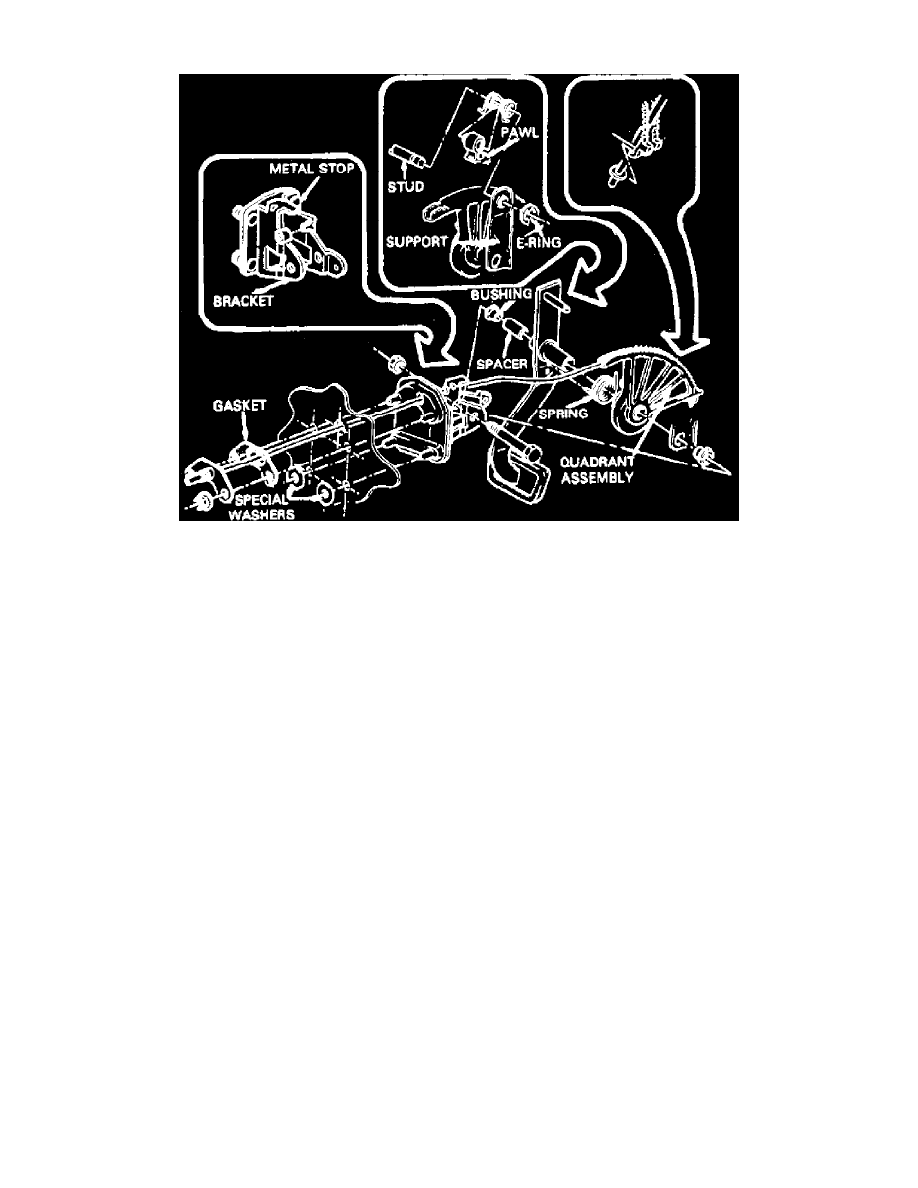Omega L4-151 2.5L VIN 5 2-bbl (1982)

Clutch Pedal Assembly: Adjustments
Fig. 1 Clutch self-adjusting mechanism
1982-86
The clutch is automatically adjusted by a self-adjusting mechanism, Fig. 1, mounted to the clutch pedal and bracket assembly. The cable is a fixed
length cable and cannot be shortened or lengthened, however, the position of the cable can be changed by adjusting the position of the quadrant in
relation to the clutch pedal. The self-adjusting mechanism monitors clutch cable tension and adjusts the quadrant position, changing the effective cable
length.
Inspection
1.
With engine running and service and parking brakes applied, depress clutch pedal to approximately 1/2 inch from floor mat.
2.
Move shift lever between ``First'' and ``Reverse'' gears several times. If no clashing of the gears occur when going into ``Reverse'', the clutch is
releasing fully.
3.
If the shifting in Step 2 is not smooth, the clutch is not releasing fully and the linkage should be inspected and corrected as necessary.
4.
Check clutch pedal bushings for sticking or excessive wear.
5.
Have an assistant depress the clutch pedal to the floor and observe clutch fork lever travel at transaxle. The end of the clutch fork lever should
have a total travel of approximately 1.5---1.7 inches.
6.
To check the self-adjusting mechanism, proceed as follows:
a. Depress the clutch pedal and observe if the pawl firmly engages the teeth of the quadrant.
b. Release the clutch pedal and observe if the pawl is lifted off the quadrant teeth by the stop on the bracket.
1987-88
A hydraulic clutch operating mechanism in used on these models which provides automatic clutch adjustment. No adjustment of the clutch linkage or
pedal position is required.
